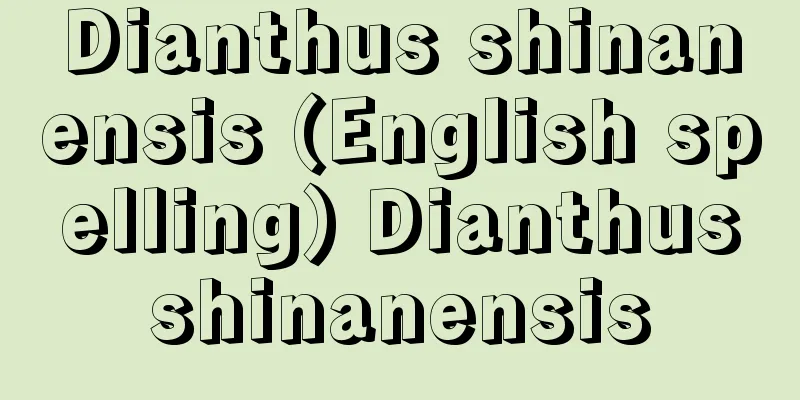Okinawa Reversion Movement

|
The Ryukyu Islands were separated from Japan and placed under the direct rule of the US military for 27 years after the end of World War II. The Ryukyu Islands were a long-term movement that demanded the return of the islands to their homeland of Japan and the restoration of Okinawa Prefecture. It is called the Movement for Reversion to the Homeland in Okinawa. Since the US military occupation during the Battle of Okinawa, the Nansei Islands (including the Ryukyu Islands and the Amami Islands), which were the center of the former Okinawa Prefecture, were administratively separated from the Japanese mainland. However, Article 3 of the Treaty of Peace with Japan, which came into effect on April 28, 1952, determined that the area would be placed under the administrative control of the United States indefinitely. Based on this treaty, the US military built a permanent base that could be used without restrictions and officially called it the "Keystone of the Pacific." The Ryukyu people were left without rights under the military rule of a different ethnic group, and the heavy pressure of the military bases oppressed their lives and human rights. In this situation, the reversion movement began in the early 1950s, and the Amami Islands, where the movement was first undertaken, were returned in December 1953, but the Okinawa Islands, where military bases were concentrated, were left behind. In 1956, an island-wide land struggle broke out in opposition to the confiscation of military land, and around this time various mass movements were organized, leading to the formation of the Okinawa Prefecture Council for Reversion to the Homeland (Reversion Association) on April 28, 1960. The initial reversion movement was merely sporadic and dispersed, with the slogan "return to the homeland as a national aspiration," but after the formation of the Reversion Association, major organizations in the prefecture were brought together and a constant network of movements was organized around the "Day of Humiliation" (Okinawa Day) on April 28 every year, and a wide range of movements were carried out that reflected the various demands of the prefecture's residents, including not only demands for reversion, but also anti-war and anti-base struggles, movements for greater autonomy, and movements for the protection of life and human rights, and it developed into an island-wide movement. In the late 1960s, after major movements such as the Okinawa unconstitutional lawsuit struggle (1965), the struggle for the two education and public education laws (1966), and the struggle to revoke the transfer of the trial (1966), a public election for the chairman of the presidency was held in 1968, and Yara Chobyo, a leader of the reversion movement, was elected. As the movement gained momentum, the movement's policies also deepened, and at the 1967 general meeting of the Reversion Association, a policy of "abolishing the Security Treaty, removing nuclear bases, and opposing U.S. military bases" was clearly set out, and by linking with the Okinawa reversion movement on the mainland, it became a driving force in pressuring both the Japanese and U.S. governments to return Okinawa to Japan. On May 15, 1972, Okinawa was reverted to Japan, despite many dissatisfaction among the prefecture's residents over issues such as the treatment of nuclear weapons and the state of the U.S. military bases. [Masahiro Oshiro] "History of the Okinawa Prefecture Struggle for Reversion to the Homeland" compiled by the Okinawa Prefecture Struggle for Reversion to the Homeland Compilation Committee (1982, Okinawa Jiji Publishing) [Reference] | |Source: Shogakukan Encyclopedia Nipponica About Encyclopedia Nipponica Information | Legend |
|
第二次世界大戦後27年間にわたって日本から分離され、米軍の直接統治下に置かれた琉球(りゅうきゅう)諸島の住民が、祖国日本への帰属、沖縄県の復活を要求して長期的に進めてきた運動。現地では祖国復帰運動という。沖縄戦における米軍占領以来、旧沖縄県を中心とする南西諸島(琉球諸島、奄美(あまみ)諸島を含む)地域は日本本土から行政分離されたが、1952年(昭和27)4月28日発効の対日講和条約第3条によって、同地域は無期限にアメリカ合衆国の施政権下に置かれることが確定した。同条約に基づいて米軍は無制限に使用できる恒久基地を建設し「太平洋の要石(キー・ストーン)」と公称した。琉球住民は異民族の軍事支配のもとで無権利状態に置かれ、軍事基地の重圧が生活や人権を圧迫した。かかる状況のなかから1950年代初頭から復帰運動が起こり、運動が先行した奄美諸島は1953年12月に返還されたが、軍事基地が集中している沖縄諸島は取り残された。1956年には軍用地接収に反対する島ぐるみ土地闘争が起こり、この前後に各種の大衆運動の組織化が進み、1960年4月28日沖縄県祖国復帰協議会(復帰協)の結成に結び付いた。初期復帰運動は「民族的悲願としての祖国復帰」というスローガンを掲げた散発的・分散的運動にすぎなかったが、復帰協結成後は県内の主要諸団体を結集し、毎年4月28日の「屈辱の日」(沖縄デー)を中心に網の目の恒常的な運動を組織し、復帰要求のみならず、反戦反基地闘争、自治権拡大運動、生活擁護・人権擁護運動など県民の諸要求を反映した広範な運動を展開し、島ぐるみ運動にまで発展した。1960年代後半には沖縄違憲訴訟闘争(1965)、教公二法闘争(1966)、裁判移送撤回闘争(1966)などの大運動を経て、1968年の主席公選を実現させ、復帰運動の指導者である屋良朝苗(やらちょうびょう)を当選させた。運動の高揚とともに運動方針も深化し、1967年復帰協総会では「安保条約廃棄、核基地撤去、米軍基地反対」の方針を明確に打ち出し、本土の沖縄返還運動とも結合して日米両政府に沖縄返還を迫る原動力となった。1972年5月15日、核の扱い、米軍基地の態様など、県民の多くの不満を残しながらも、沖縄の復帰は実現した。 [大城将保] 『沖縄県祖国復帰闘争史編纂委員会編『沖縄県祖国復帰闘争史』(1982・沖縄時事出版)』 [参照項目] | |出典 小学館 日本大百科全書(ニッポニカ)日本大百科全書(ニッポニカ)について 情報 | 凡例 |
<<: Okinawa Cultural Association
>>: Okinawan stick insect - Okinawan stick insect
Recommend
Taxin
... There are eight species of Taxus (English nam...
Shiba Kokan - Shiba Kokan
A Western-style painter from the mid-Edo period. ...
Sada Shinnou
(Kashimacho, Matsue City, Shimane Prefecture) A re...
Chevalier - Maurice Chevalier
French chanson singer and film actor. Born in Mén...
Sarcodina
…Many of the latter are parasitic, such as the Tr...
non-directional radio beacon
… [History of Air Traffic Control] The need for a...
Tarquinius Collatinus
…But King Superbus' rule became dictatorial, ...
Roszak, T.
...The counterculture was carried by the New Left...
Thāru (English spelling)
The indigenous people of the Terai plains, which s...
Helenos (English spelling)
A character in Greek mythology. Son of Trojan King...
Osuminomiya (Osaka)
...Ancient palace ruins from the mid-7th century ...
Sandwort
...An annual to perennial weed of the Caryophylla...
Pierre Mendès‐France
1907‐82 French politician. He became a member of t...
MPPA - MPPA
...The block booking system brought Hollywood to ...
Breeding - Reproduction
It refers to the process by which an organism inc...




![Izumi [village] - Izumi](/upload/images/67caea0964302.webp)

![Kugino [Village] - Kugino](/upload/images/67cb6710c7ff0.webp)


